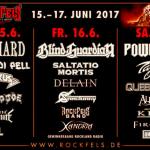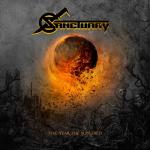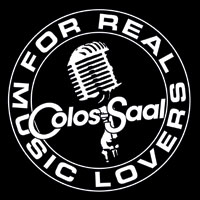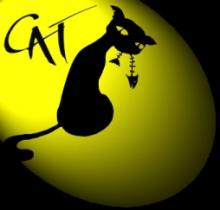Sanctuary
Sanctuary biography/liner notes 2014
By Chris Dick
Thrash reigned supreme in 1985. Classics were made by Exodus, Dark Angel, Possessed, Anthrax, Kreator, S.O.D., Slayer, Celtic Frost, Megadeth, and many more. It was a vicious time as well. Ronald Reagan was sworn in for the second time as president, Mikhail Gorbachev hooked his way into Chief Communist of the Soviet Union, wicked weather ruined the large swaths of the Midwest, airlines suffered a brutal year of seemingly endless crashes, and Microsoft released Windows 1.0. To the youth of the day, the end of the world was near. They needed a voice, a flag of their own to wave, a form of sonic violence to quell unquestionable inner and outer turmoil. Thrash sated their hunger, gave them sustenance.
BORN FROM DARKNESS
Little known fact: Sanctuary also formed in 1985. While the rest of the world reeled in tumultuous uncertainty, five twenty year-olds from Seattle felt they had something to offer.
“It was hard to find a decent vocalist,” laughs guitarist Lenny Rutledge, looking back on the Sanctuary’s early days. “We looked pretty hard in 1985. We eventually found Warrel [Dane]. He was in another band called Serpent's Knight. We kind of stole Warrel from Serpent's Knight. We basically invited him out to see what we had going on. Back in the day, we were super-ambitious. We had a warehouse with a huge stage that could never possibly be moved by any sane person. It was huge. I remember the look on Warrel’s face when he saw it. He said, ‘Oh my god! You guys are the real deal!’ We eventually gave him some demo stuff to work on. One of the first songs to come out of that with Warrel was ‘Soldiers of Steel’. We developed immediately from that point.”
Eventually, Sanctuary’s boundless drive took them to Triad Studios, where they recorded 1986 Demo. Across the tape’s eight manic minutes, Sanctuary were absolutely magnetic. The two songs were ‘Insane’ and ‘Incubus’. More than competent musically and compositionally—a cross between American and British heavy metal—the highlight of demo was Dane, however. His banshee-like cries froze metal warriors in their tracks. “We gave those early demos to the local college radio guy named Jeff Gilbert,” recalls Rutledge, “who had a show called Brain Pain on every Sunday. He played it every Sunday, really pushing us.”
Sanctuary’s aspirations became reality when Rutledge attended a King Diamond/Megadeth show in 1986. Determined to have his hero Mustaine hear Sanctuary, the guitarist played it cool, couching at the back of the venue with a few friends. He didn’t get to meet Mustaine. Not at the venue anyway. “I had a friend with me. He was with two girls,” Rutledge remembers. “Somebody said, ‘Hey, Dave is staying at a hotel down the street.’ So, we went down there, pushed the two girls in first and were welcomed with open arms. Dave was sitting in the corner. He had a reputation that I worried about. He locked eyes with me and said, ‘You! Come here!’ I thought he was going to throw me out. He was drinking Courvoisier. I had never had Courvoisier before. He was playing with this little plastic shark. I don’t know why, but we hit it off. He was super-cool. We got to talking about music. Eventually, I said, ‘I got this tape. You gotta hear it! I gotta play it for you!’ It took a lot of convincing, but I eventually got him down to my buddy’s car. We listened to it. He really liked it. He gave me his phone number. I thought, ‘This isn’t his real number. Dave Mustaine doesn’t give out his real number.’ Sure enough, I called it and on the answering machine was Dave. He called me back a few weeks later, saying he loved the tape and that he wanted to produce us. The rest is history.”
With Mustaine backing Sanctuary, the five-piece signed a deal with Epic Records. The Megadeth helmsman agreed to produce Sanctuary’s debut, Refuge Denied, with upcomer Paul Lani, as well as guest solo on Jefferson Airplane cover ‘White Rabbit’. Megadeth even brought Sanctuary on tour, mentoring the group on the trials and tribulations of the road. But Refuge Denied itself was furious and hair-raising. Pinned at the front by the galloping might of ‘Battle Angels’ and in the rear by heartstopper ‘Veil of Disguise’, the album displayed surprising maturity for such a young act. Well received by fans and the press alike, Refuge Denied served as a platform from which Sanctuary would expand exponentially. “The first record was a little more of angry young men just going for it,” says Rutledge. “The second record was a little more thought out. It was more cerebral. When we did the first album we were caught up in the thrash metal movement. The second record, even the cover, was more conceptual. We were trying to get away from the monster cartoon image. We loved monsters and cartoons, but we wanted to do something different.”
Mustaine had left the supervisor role to regroup Megadeth, but that didn’t stop Sanctuary from refining their craft. It took the better part of two years for the band to write, record, and release sophomore album, Into the Mirror Black. Recorded with Howard Benson at Sound City Studios, Into the Mirror Black benefitted from more focused songwriting—opener “Future Tense” is discomfortingly relevant to this very day—sheer determination, and Benson’s hands-on approach. Sanctuary finally had the album that would compete for precious heavy metal mindshare. Despite Into the Mirror Black garnering rave reviews—UK’s biggest metal magazine Kerrang! gave the album a 4K rating, calling it “engaging from start to finish”—and increasing Sanctuary’s worldwide profile, the timing was off. It wouldn’t be Empire, Impact is Imminent, The American Way, Souls of Black, Cowboys from Hell, or thrash metal pinnacle Rust in Peace that would steal the group’s thunder. Something else was afoot. Vocalist Warrel Dane says, “In ’88, the scene was changing. In ’90, it was transforming very fast. Everybody thought metal was next big deal. A lot of bands in Seattle had record deals by that point. We had a record deal. Soundgarden had a deal. Alice in Chains had just gotten a record deal.”
During that time, Seattle bands were garnering major attention from record labels, the record-buying public, and Hollywood. While grunge didn’t hit critical mass until the mid-‘90s, the sheer sales force of fellow Seattleites put top-down record label pressure on Sanctuary. “Grunge didn’t affect us on Into the Mirror Black,” corrects Rutledge. “It affected us after. About the time we were supposed to write our third record, we got pressure from the record label. Everybody was changing to grunge. I never saw Sanctuary taking that kind of right turn. We do like Alice in Chains and Soundgarden, but sounding like them was insanity.”
“There was pressure from the record company to take a different direction,” Dane adds. “I thought it was better, at the end of the day, to not change. I didn’t want to change. It didn’t go over well. We ended up at a big keg party at one our roadies’ house. The end of Sanctuary was us in a pile on the floor in a massive fist fight. That was it. Next day we formed Nevermore.”
FROM ASHES RISE ANOTHER BEAST
Sanctuary had splintered shortly after guitarist Jeff Loomis replaced Sean Blosl. And that was it, for the most part. Nevermore, with bassist Jim Sheppard in tow, continued on, writing technical thrash awesomeness in the form of full-length demo Utopia and the 1994 Demo. Meanwhile, Epic Records weren’t hearing Nevermore’s potential. “Nevermore were still held under contract [with Epic],” Dane sighs. “We sent massive amounts of demos to them. The A&R guy at Epic would always say, ‘Frankly, we were expecting something grungier.’ But we bounced back pretty good. We worked our asses off to get Nevermore off the ground.”
Even so, the specter of Sanctuary haunted the newly formed Nevermore. So much so that when Nevermore embarked on its first ever tour with Blind Guardian in 1995—shortly after the release of the group’s self-titled Century Media debut—they played Sanctuary songs, some of which went over better than ‘What Tomorrow Knows’ or ‘The Sanity Assassin’. “It didn’t really surprise me,” laughs Dane. “When the band was over we were more popular. When Nevermore were first touring we played a lot of Sanctuary songs. It was like, ‘Fuck! People like these songs better than our new songs.’ We break up and get more popular. How’s that for irony?”
Nevermore went on to greatness. The group released seven full-lengths from 1992 to 2010. Countless world tours, Billboard chart entries—The Obsidian Conspiracy cracked the Billboard Top 200 and entered the Billboard Heatseekers chart at #1, while Enemies Of Reality smashed the Top Independent Albums chart at #19—and a rabid fanbase helped Nevermore generate significant gravity among metal’s elite. The group took a short break in 2008 to see solo albums from Dane and Loomis ushered by Century Media. Dane went one in direction on Praises to the War Machine and Loomis entirely in another with Zero Order Phase.
Between Sanctuary’s untimely demise, Nevermore rising to power, and individual efforts by the group’s senior leadership going on to grand acclaim old business remained unfinished, however.
"We got along really well when we weren’t in the band,” says Rutledge. “We had fun together. There was no stress. We didn’t see each other often. Maybe a few times a year. We missed each other. Then, in 2008 we got a call for ‘Battle Angels’ to be used in the Brütal Legend game. We started talking to each other. I had a song I had written for Warrel. It wasn’t appropriate for the band I was in at the time. So, I told him about it while talking about Brütal Legend. I sent it to him and he really liked it. We went back and forth on re-starting Sanctuary. We played a few shows eventually and had a lot of fun doing it. It was fresh and cool.”
Dane is quick to remind that Nevermore and Sanctuary were concurrently active. Loomis, Sheppard, and Dane performed double duty and all seemed well for the coexistence of both acts. But in 2011, it all went awry. Nevermore cut itself into tiny pieces for inexplicable reasons and Loomis found it necessary to jettison from Sanctuary. The end for both bands appeared brutally final.
AS ABOVE, SO BELOW
Near destruction—most of it hideously self-inflicted—has a way of giving birth to something new. Well, not entirely. With Loomis out of the picture, Sanctuary slowly picked up its guts and brains from the proverbial floor. Dane victoriously exorcised his long-storied drug and alcohol demons—“All the drug shit is way behind me. It was my impetuous youth syndrome gone to a very real extreme.”—and Ex-Forced Entry axeman and fellow Seattle bro Brad Hull ceremoniously replaced Loomis. Reformed and re-energized Rutledge, Dane, Sheppard, Hull, and drummer Dave Budbill kicked off repeated waves of introspection and, of course, songwriting. What started out with a song—worked and now titled ‘One Final Day’—had ended up in a full-length album.
“It’s definitely different,” Rutledge offers. “Production-wise, it’s far and away better. There’s a lot of different things on the record. Fast, upbeat songs, similar to songs from Into the Mirror Black. We also have some slow, moodier songs too. Some of the lead playing is thought out. Not guitar hero stuff. It’s intricate. Also, the vocals get pretty high in spots. It feels pretty close to a natural progression from Into the Mirror Black.”
Titled The Year the Sun Died, Sanctuary’s long-awaited third album simultaneously burns barns and expands heads.Songs like ‘Arise And Purify’, ‘Exitium (Anthem Of The Living)’, and ‘The World Is Wired’ recall the early ‘90s but are stunningly modern in sound and vision. The Doors cover ‘Waiting for the Sun’ is a nod to late ‘60s rock ‘n’ roll and Sanctuary’s own braveheart rendition of ‘White Rabbit’. Recorded at Soundhouse Studios in Seattle with Zeuss (aka Chris Harris), The Year the Sun Died proves Sanctuary boldly lives on to fight another day. Not on the beersplattered floor of a roadies’ house, but on the biggest of world stages. “It sounds like a grown up Sanctuary,” promises Rutledge. “I don’t know if that’s good or bad, but I hope our audience has grown up with us. If you’re only expecting Refuge Denied, you’re going to be disappointed. That was a slice in time for us. We’re pretty comfortable with how the record came out.”
“The Year the Sun Died is a sister album to Dreaming Neon Black,” Dane reveals. “It has the same tone. This new record is the heaviest six-string record we could’ve possibly done. It was always hard to sing over Jeff’s abstract tunings and all the weird shit he did. It was really challenging. This is also challenging. It’s traditional tuning. They’re different beasts. But it’s nice to sing to six-strings again.”
Both of Dane and Rutledge are right. The Year the Sun Died is Sanctuary matured and heavier than Bill Gates’ bank account. For that, we all—young and old—can be thankful Seattle’s finest has returned. Stronger than ever. Sanctuary is: Warrel Dane (Vocals), Lenny Rutledge (Guitar), Sean Blosl (Guitar), Jim Sheppard (Bass), Dave Budbill (Drums).
Quelle: http://www.centurymedia.com/Discografie1986 - Demo
1987 - Refuge Denied
1988 - Interchords - Words And Music (Split)
1989 - Into The Mirror Black
1990 - Into The Mirror Live / Black Reflections (EP)
2010 - Refuge Denied & Into The Mirror Black (Compilation)
2014 - The Year The Sun Died
www






